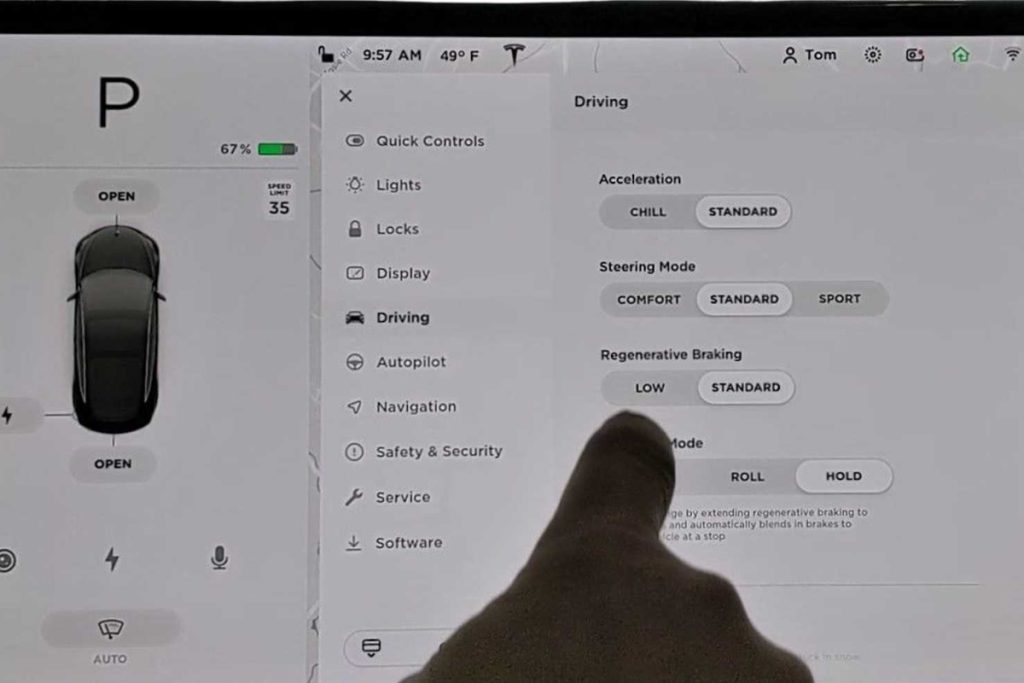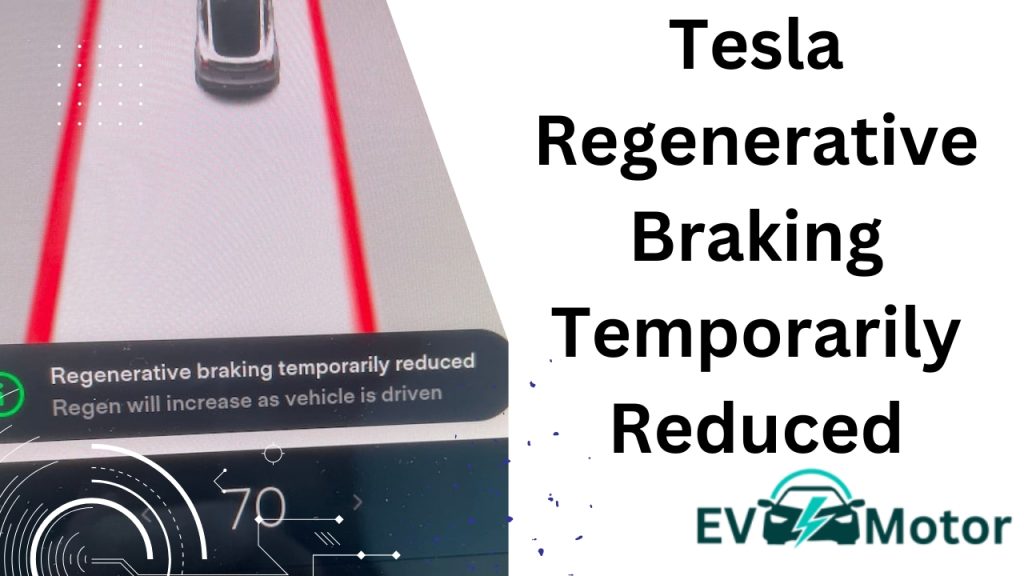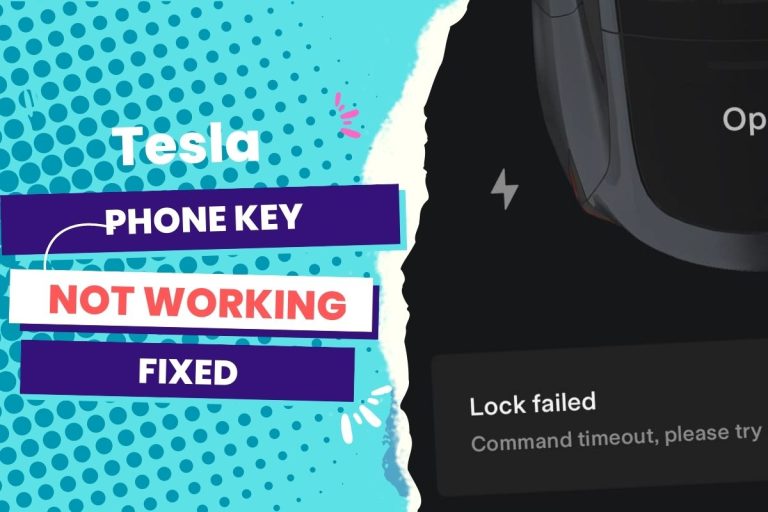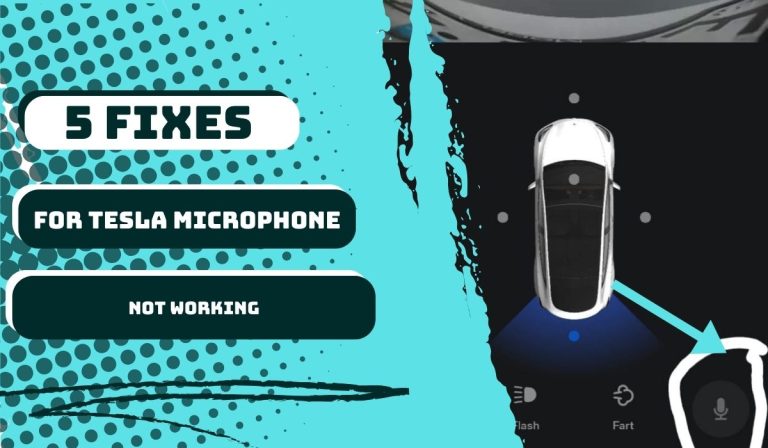The most common reason for a “Regenerative Braking Temporarily Reduced” message on your Tesla is that your battery is fully charged and does not require any additional energy storage. This message may also appear if you are driving or charging your Tesla in cold weather. In most cases, this is not a serious condition, and the message will disappear as your car warms up.
The Tesla has two different types of braking systems. One is a very conventional hydraulic brake with brake pads and disks on all four wheels that can be electrically operated by the computer. The other is “regenerative braking,” which utilizes the primary drive motor(s) as electricity generators and slows down the car (though not as effective as the hydraulic brakes), using the electricity it generates to charge the battery.
There’s a chance that if you drive a Tesla, you’ve seen the notification that “Regenerative Braking is temporarily reduced.” A new Tesla owner might not understand this message, but it merely indicates that the regenerative brakes won’t work as they should. As a result, slowing down or even stopping the vehicle may take a while.
You should be aware that this is common and that you are not required to have your car serviced. We would list the causes of the temporary reduction of regenerative braking and how to fix it.
You Can Skip To Sections Here
More Reasons Why Your Tesla’s Regenerative Braking Is Temporarily Reduced
With the use of regenerative brakes, the entire kinetic energy of your Tesla can be converted into electrical energy for use in battery charging. So instead of losing all that energy as heat, we use it to recharge the batteries in our Tesla cars. Let us now look at some of the reasons.

1. Your Battery Has Been Fully Charged
Charging car batteries is a major cause of the temporary reduction in regenerative braking. Even with today’s cutting-edge charging technology, it takes some time to charge up and get back to work after your batteries run out. Most Tesla owners charge their vehicles overnight to ensure they reach 100% capacity.
It’s fantastic to be able to use your Tesla’s entire range without worrying about running out of gas. In exchange for a full charge, you will not be able to use one of the cool features of your Tesla, which is regenerative braking. Regenerative braking not only slows down the vehicle but also recharges the battery.
2. Designs for Winter Tire Treads
Based on the weather, many automobile enthusiasts enjoy replacing the tires on their vehicles. Your Tesla’s regenerative braking power will momentarily reduce if you install winter tires with harsh tread patterns.
Most Tesla experts advise changing the tires to revive your Tesla’s regenerative braking capability. After some straight-line torque acceleration, the car will automatically adjust itself. Occasionally, the recalibration procedure follows a brief period of routine driving.
3. Your Battery Might Have Too Much Energy
Tesla vehicles use lithium-ion batteries to generate electricity that improves propulsion. These batteries are known for their long-lasting charge retention. Sudden braking in response to a road hazard generates an excess of kinetic energy. Regenerative braking is temporarily reduced due to excess kinetic energy.
Tesla experts recommend safe driving practices to help you come to a stop without using the brakes. Keep the hit numbers low to maximize the effectiveness of the regenerative braking technology.
3. The Issue of The Cold External Temperature Also Exists
Tesla and other electric vehicles face the same cold weather constraints as conventional vehicles. The anode change will make charging the Tesla battery in freezing temperatures difficult. The Tesla car should display a notification outlining the situation on the left side of the screen.
At lower temperatures, around 40 to 50 degrees Fahrenheit, regenerative braking becomes less effective. The battery function adjustment will reduce the effectiveness of regenerative braking temporarily.
To enable regenerative braking in the winter, Tesla recommends heating the cabin to raise the battery’s temperature. Purchasing a Tesla model with battery pack warmers is another option for maximizing the use of regenerative braking power.
How to Fix the Temporary Reduction in Regenerative Braking
After knowing what causes the reduction in regenerative braking, let us now look at the solutions to maximize your Tesla’s regenerative braking.
1. Park Your Tesla Properly.
Ensure you park in a warm garage or climate-controlled underground parking if you live in a chilly climate.
You can employ more regenerative braking by keeping the battery warm. When it is below 50 degrees Fahrenheit, Tesla’s program reduces the amount of regenerative braking that is used.
2. Ensure You Regularly Have Your Tires Inspected
Paved roads will not be handled as well by worn-down tires as they would by new tires. When the tires handle the driving conditions, regenerative charging can be maximized because less energy is used.
3. Additionally, Try Not to Overstuff Your Roof Racks
When regenerative braking, the Tesla’s aerodynamics on the rack will be affected by how much stuff is on it. Never go faster than 60 mph. Slower speeds will result in more regenerative braking and a 14 % decrease in energy usage. To get the most out of regenerative braking in a Tesla, you must let the car begin to drive to a stop at a speed that is unusual for you.
4. Apply Brake Pressure
Additionally, try to use active regenerative braking by applying more brake pressure before coming to a complete stop. When you get to the top of a hill, make sure not to use the pedal. Use the petal just long enough to get to the top, then let go.
5. Make Sure That The Regenerative Braking Is Set to Standard.
If your Tesla model has an option, you may modify it; A lower regenerative braking charge will occur when the mode is low. The newest models only have one setting, “normal,” which makes you generate more energy when you brake. There are no other settings. This is done to force people to adapt to a single context. Some people are surprised when they use regenerative braking because the car moves forward a little bit.
6. Charge 80% to 85%
Regeneration is less effective when you start the day with a cold battery at 90%. Most Tesla owners noticed that their morning regenerative braking went up a little after the percentage went up to 85%. Use the interface’s scheduling tool in the charging section to let your car know when you leave for work.
This warms up the battery to make it better at recharging and ensures that your charging is done before you leave. Even if there are a few dots on top, most owners have noticed an improvement in braking. If the nighttime temperature falls below the mid-fifties, this could happen.
You can pre-heat the cabin a half hour ahead if you know you’ll need the car in the morning.
Why does Tesla have regenerative braking?
The reasons include:
For increased safety
Undoubtedly, the regenerative braking system’s added support results in a generally safer ride. It enables braking to begin immediately as the driver’s foot leaves the gas pedal, rather than requiring them to transfer between two pedals.
Regained Power
Your car’s battery receives energy from the reversing motors. Although this doesn’t extend your range, it reduces your consumption, promotes more efficient driving, and brings you much closer to the estimated maximum battery range shown. In normal situations, you would have to think about how you drive, making the expected remaining range a little shorter.
Brake wear can be reduced
Regenerative braking significantly reduces the required braking force, especially while traveling at moderate speeds and with little chance of unexpected braking needs. This significantly reduces the level of wear that occurs on your brakes, saving you money over time on brake pad repair and lowering the possibility of braking rotor failure.
Conclusion
It will be easier to avoid time constraints if you understand how regenerative braking systems work. We think that the above things made it easier to figure out why Tesla’s regenerative braking power dropped for a while.
Tesla has recently introduced an intriguing feature to address this issue. Tesla claims to have introduced the option to use standard brakes to compensate for the loss of regenerative braking in its most recent software.
You’ll notice that Tesla also added the words “OK to drive.” This language is usually displayed when there is a problem with the vehicle, such as when the warning light reads, “Power is restricted. “OK to drive; please schedule service.”, or “OK to drive; please schedule service.” “Please allow me to drive.”




